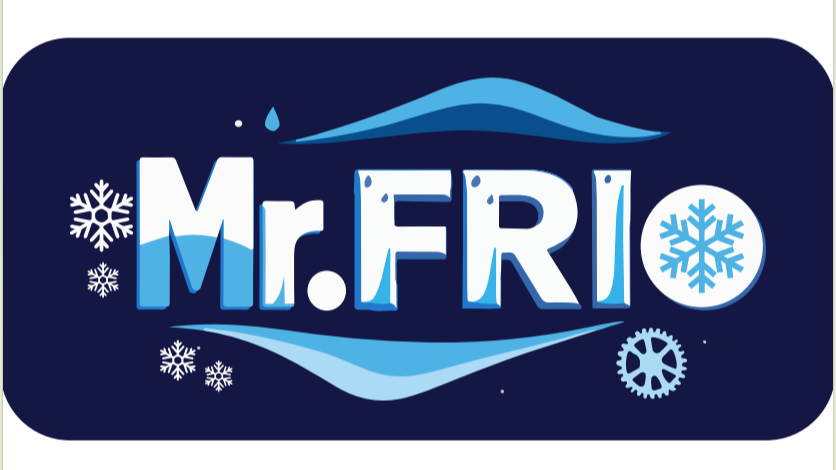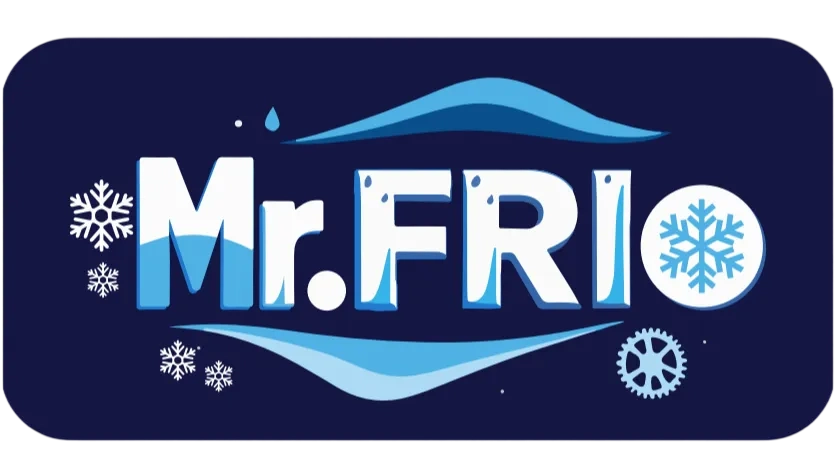Why Commercial Refrigerator Maintenance Matters
Extending Equipment Lifespan Through Preventive Care
When commercial refrigerators get regular preventive maintenance, they tend to stick around about 2.5 times longer in food service settings according to the National Restaurant Association report from 2023. Checking door seals once a week and keeping an eye on refrigerant levels really takes pressure off the compressor, which happens to be what breaks down most often in these systems. Restaurants that stick to the maintenance schedules recommended by manufacturers end up needing repairs roughly 63% less frequently compared to places that only fix things when something goes wrong, as noted by Food Service Technology Center research back in 2022. Makes sense when you think about it this way: taking care of equipment before problems arise saves money and headaches down the road.
Preventing Food Spoilage with Regular System Checks
Temperature fluctuations contribute to 14% of annual food waste in hospitality operations (USDA 2022). Monthly calibration of thermostats and airflow sensors ensures consistent cooling and compliance with FDA safety standards. Restaurants that maintain daily temperature logs see 82% fewer spoilage incidents compared to those relying on sporadic checks.
The Financial Cost of Neglecting Commercial Refrigerator Maintenance
Restaurants typically lose around $40k each year when their refrigeration systems fail, which includes wasted food, expensive emergency fixes, and all that lost time while things get fixed according to Restaurant Technology Network's 2023 report. Replacing a compressor alone can set businesses back anywhere from $2,500 to as much as $7,200. That price tag is roughly eight times what most places spend on regular maintenance throughout the year. According to ASHRAE data from 2022, restaurants that allocate just half a percent of their revenue towards ongoing maintenance actually end up saving about eleven bucks for every single dollar invested. These savings come mainly from longer lasting equipment and significantly less food waste over time.
Essential Preventative Maintenance Routines by Frequency
Daily and Weekly Checks: Temperature Monitoring and Airflow Management
Check refrigerator temperatures twice daily using calibrated thermometers, ensuring fresh food storage remains between 34°F–38°F (2024 Food Safety Audit Report). Clear airflow obstructions weekly by inspecting evaporator fans and cleaning vents–blocked airflow reduces efficiency by 17% (DOE 2023). Maintain electronic temperature logs to detect trends and avoid regulatory violations.
Monthly Tasks: Condenser Coil Cleaning and Fan Inspection
Clean condenser coils every 30–90 days using a fin comb and low-pressure vacuum; dust buildup can increase energy use by 25% (Energy Star 2023). Inspect condenser fan motors for unusual vibrations and lubricate bearings as needed. Coil-focused maintenance reduces compressor failures by 33%.
Quarterly Maintenance: Condensate Drain Line Cleaning and Seal Integrity
Flush drain lines quarterly with warm water and baking soda to prevent clogs and water damage. Test door gaskets using the dollar bill method: if the bill slips out easily when the door is closed, replace the seal. Leaky gaskets can waste over $140 per year in energy (DOE 2023).
Maintaining Accurate Commercial Refrigerator Maintenance Logs
Use CMMS platforms to digitize inspection records, track task completion, and flag overdue actions. Facilities with digital logs achieve 83% higher compliance rates during health inspections (2024 Refrigeration Compliance Study). Standardize entries with timestamps, technician notes, and photos of resolved issues–essential for audits and maintenance schedule optimization.
Troubleshooting Common Commercial Refrigerator Problems
Commercial refrigerators are critical to foodservice and retail operations, but even durable systems can develop issues. Proactive troubleshooting minimizes downtime while protecting inventory and compliance.
Warm Temperatures: Airflow Obstruction and Overloading Issues
Warm zones often result from blocked vents or overpacked shelves restricting airflow–68% of temperature excursions stem from these causes (2023 food safety study). Maintain at least 3 inches of clearance around vents and rotate stock regularly to ensure even cooling.
Thermostat Malfunctions: Calibration, Replacement, or Recalibration
A thermostat drifting just 3°F beyond optimal range increases energy consumption by 14% (Department of Energy 2024). Test accuracy monthly with a calibrated thermometer. For digital units, perform a factory reset before replacing sensors.
Excessive Frost and Ice Buildup: Defrost System and Door Gasket Checks
Defrost cycles occurring more than twice weekly may indicate failing heaters, timers, or termination switches. Research shows that 92% of frost-related breakdowns begin with worn door gaskets allowing humid air inside.
Sudden Temperature Fluctuations and Their Root Causes
Erratic cooling often signals refrigerant leaks–detectable with UV dye kits–or failing condenser fan motors. In systems older than seven years, voltage fluctuation logs help technicians identify early signs of compressor wear before total failure.
Deep Maintenance: Compressor, Coils, and Professional Inspections
Compressor Care to Avoid System Failure in Commercial Refrigerators
At the core of any refrigeration system sits the compressor, which pushes refrigerant through the system under pressure. To keep things running smoothly, check for vibrations monthly that might indicate alignment issues, and run electrical tests once a year to catch signs of motor wear before they become problems. Make sure there's about an inch or two of space around those condensers so air can flow properly, and don't forget to grease those moving parts every few months to cut down on friction. Restaurants that skip regular compressor maintenance tend to see their chances of breakdowns during busy service hours jump by roughly 40%, according to industry research from Ponemon in 2023. When these failures happen, repairs usually run somewhere between three grand and seven grand, money better spent on preventive care instead.
Condenser and Evaporator Coil Maintenance: Tools and Best Practices
Clogged coils force compressors to work 25% harder, according to HVAC efficiency studies. Optimize performance with these tools:
- Fin combs straighten bent evaporator fins to restore airflow
- Non-corrosive coil cleaners remove grease without damaging aluminum
- Infrared thermometers verify uniform temperature across condenser surfaces
A bi-monthly cleaning routine cuts energy use by 15–20% in walk-in units.
Scheduling Professional Inspections and Ensuring Health Code Compliance
Getting equipment checked by professionals once a year can actually stretch its life expectancy anywhere from three to five extra years while keeping things compliant with those NSF/ANSI 7 sanitation rules everyone talks about. What do these techs actually do? They hunt for refrigerant leaks, tweak thermostats so they're accurate within about one degree Fahrenheit either way, and double check when the defrost cycles kick in. Restaurants and cafes that stick to regular maintenance schedules see something pretty impressive happen too. According to some recent checks done in twelve different states back in 2023, places following these programs had roughly two thirds fewer problems with health codes compared to those that didn't bother with regular servicing. That's not just good for avoiding fines either it means customers get served safer food overall.
Creating a Custom Commercial Refrigerator Maintenance Checklist
An effective commercial refrigerator maintenance checklist balances thoroughness with usability. Begin with core tasks: daily temperature logging, weekly door seal checks, and monthly coil cleaning. Automated sensors improve consistency, while monthly brushing prevents dust buildup that cuts efficiency by up to 15% (Energy Star 2023).
Customize your checklist by equipment type:
- Walk-in units require floor drainage inspections and strategic space planning to prevent airflow blockages
- Reach-in models benefit from weekly fan blade checks and balanced load placement to reduce motor stress
When choosing between digital and paper tracking, prioritize systems with automated alerts for temperature deviations. Kitchens using digital logs reduce repair costs by 30% compared to manual methods (FSCI 2022). Leading HVAC experts recommend integrating digital tools with quarterly professional inspections to align maintenance with peak demand periods.
For structured guidance, refer to this proven checklist framework covering emergency procedures, seasonal adjustments, and compliance documentation. Update the template annually to reflect new regulations or equipment upgrades.
FAQ Section
Why is preventive maintenance important for commercial refrigerators?
Preventive maintenance extends the lifespan of commercial refrigerators and reduces the frequency of repairs, ultimately saving money and preventing headaches related to unexpected breakdowns.
How often should commercial refrigeration systems be maintained?
Routine checks should occur daily, weekly, monthly, and quarterly. Daily tasks include temperature monitoring, while weekly and monthly tasks involve airflow management and coil cleaning, respectively.
What are the most common problems with commercial refrigerators?
Common issues include temperature fluctuations, thermostat malfunctions, and excessive frost or ice buildup. Troubleshooting these problems early can minimize downtime and protect inventory.
How can professionals help in extending the life of a commercial refrigerator?
Professional inspections once a year can help detect leaks, calibrate thermostats accurately, and ensure defrost cycles are functioning correctly, which extends the life of refrigeration equipment and ensures compliance with health codes.
Table of Contents
- Why Commercial Refrigerator Maintenance Matters
- Essential Preventative Maintenance Routines by Frequency
- Troubleshooting Common Commercial Refrigerator Problems
- Deep Maintenance: Compressor, Coils, and Professional Inspections
- Creating a Custom Commercial Refrigerator Maintenance Checklist
- FAQ Section


